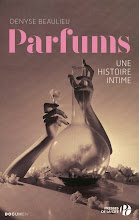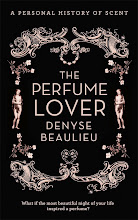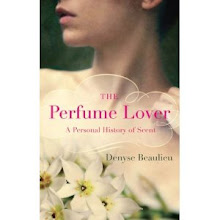Since
the visual will always trump the less verbalized, fuzzier olfactory
perceptions, exhibitions using scent often tend to turn the latter into a
gadget. As for exhibitions of scent,
they struggle with the way scents are shown. Perfume is an art of space:
boundless and diffusive, it saturates the air and mixes with other
compositions. It is also an art of time: its form develops over the hours, so
that sending out a puff of Jicky will
distort the form of Jicky, which is not meant to be
perceived all at once but as it evaporates.
Perfume
is also a type of performance art. First because, if it has been conceived as
fine fragrance, the heat of its wearer’s body is needed for its form to become
perceptible. Then, more importantly, because it is our “reading” of it that
materializes it into words, images, stories.
Christophe
Laudamiel and Jakob Kupfer’s joint exhibition at the Mianki Gallery in Berlin(from 13.03 to 19.04.2014) plays on these phenomena while subtly disrupting
them.
The
exhibition displays a series of installations designed to experience/experiment
on the way colors and shapes inflect olfactive perception. Jakob Kupfer is an
elusive Lichtmahler (a term gallerist
Andreas Herrmann translates as “photo painter”, i.e. “painter with light”) whom
no one has ever met. He supplied two types of images called FADES. The first
are photos of colored lights on waxed pigment prints that somehow feel like
they are moving, reproducing the unfocused gaze of a newborn’s eyesight. The
others are light-boxes in which many pictures are layered: a mechanism within
the box creates a “motion picture”, so that the abstract colored spots are
constantly morphing.
Two
square white “frames” are set in the middle of the room. You’re meant to put
your head inside a frame and look at one of the pictures while pressing a
button to catch a whiff of either Four
Seasons Flower or Gone with the Wind.
Your spontaneous perception of the scent will vary according to what you’re
seeing.
Both
scents are “static”: it is the movement of the images that induces a sense of
time at each “scent-viewing”, as your brain is tricked by colors into perceiving
the notes differently each time you see-smell. So that the classic relationship
between image (static) and fragrance (evolutive) is reversed. Or rather, they
contaminate each other, since the moving image sets the scent in motion, and
the scent-moment freeze-frames the morphing image. The action of scent on image
also induces figurative artefacts: when your brain gropes for representations (as
it always does in the presence of abstract perfumes or pictures), you start
see-smell-naming real things. For me: successively jelly beans, cotton balls, a
splash of green sap.
The
second type of installation solves the main commercial issue of scent-art: its
invasive nature. Here, the scents are presented in “parabola”: concave
porcelain dishes with a lid, holding impregnated pieces of ceramic. You smell
the “fumes” in the lid. You put the genie back in the bottle when you set the
lid back on the dish. These can be experienced with or without a visual
“partner”: in the latter case, words (the titles) act as hooks for meaning,
though you are encouraged to smell first, read later. Scent art is not a Greenbergian, intransitive
“nothing but the olfactory” form of expression: it always-already plays on the
words that inspired it or that it inspires.
Because
the idea is to experience each “sight-smell” as spontaneously as possible,
these installations yield the constantly renewed pleasure of surprise. And because
these successive, instantaneous bubbles of see-smell-name play on the most
fleeting of perceptions, brought on by the most ungraspable, indescribable
elements – scent molecules and photons --, they generate myriad immaterial,
irreproducible, ephemeral, individual artworks. Tiny synesthetic seizures;
stop-motion brainwaves; pop-up memories.
And
the beauty of it is that anyone can get
it. This novel form of show-and-smell manages to be pedagogical – the other major hurdle of scent-art is that
almost no one knows about fragrance, so that you always have to go back to
Scent 101 – without supplying a word of explanation, just a set of directions.
To view scent sculptures:
1. Close your eyes.
2. Breathe naturally, do not
sniff or change your breathing.
3. Your nose habituates to a
scent in minutes but does not get tired.
4. To refresh: breathe your
own skin, no coffee beans please.
5. Your brain is learning a new language, it will not
explode.








 L'actu
L'actu 


Aucun commentaire:
Enregistrer un commentaire